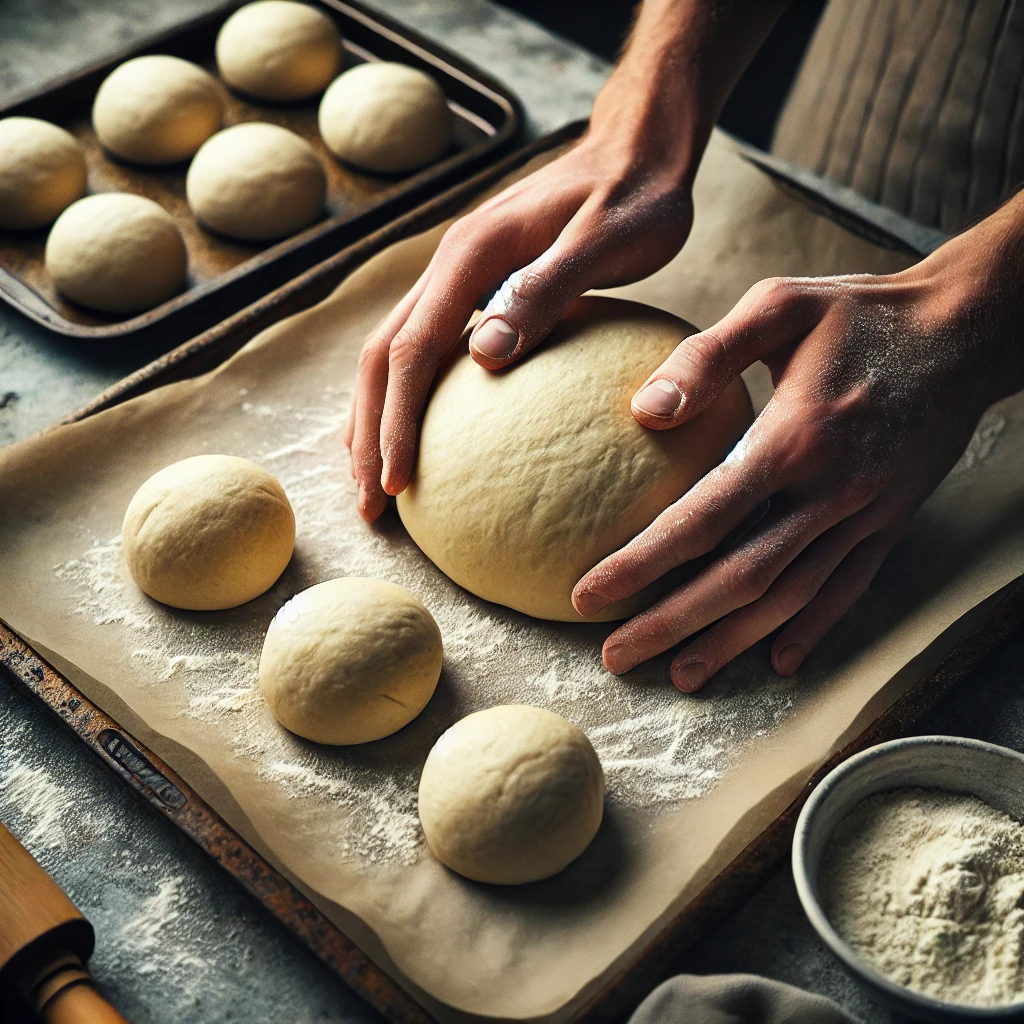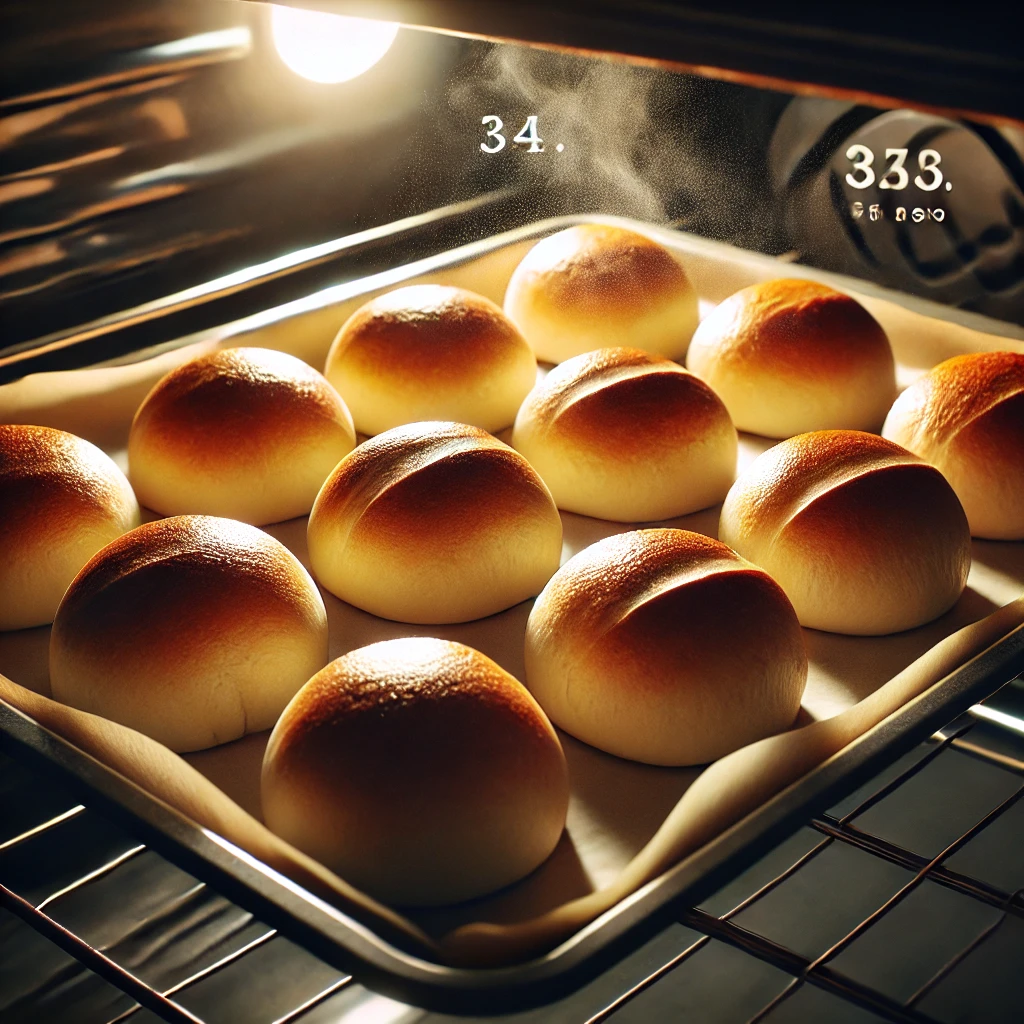There’s something truly magical about the smell of freshly baked bread filling your home, especially when it’s soft, pillowy sourdough dinner rolls. These rolls aren’t just any bread; they are the perfect balance of fluffy texture, a slight tang from the sourdough, and a buttery finish that melts in your mouth. Whether preparing for a family dinner, a holiday gathering, or simply wanting to impress with homemade bread, learning how to make soft sourdough dinner rolls at home is a skill worth mastering.
In this detailed guide, you’ll learn everything you need to know about making these delicious rolls from scratch, even if you’re new to baking with sourdough. From understanding the ingredients to mastering the rise and bake, we’ve got you covered.
Table of Contents
Why Make Sourdough Dinner Rolls at Home?
When you bake sourdough rolls at home, you’re not just making bread—crafting a wholesome experience. Here’s why these rolls should become a staple in your kitchen:
- Health Benefits: Sourdough is naturally fermented, which makes it easier to digest. Fermentation reduces phytic acid, allowing your body to absorb nutrients more efficiently. Plus, it’s packed with probiotics, which are great for gut health.
- Superior Taste: The slightly tangy flavor of the sourdough starter adds a unique depth to your dinner rolls that you won’t find in commercially produced bread.
- Customization: Homemade rolls allow you to control the ingredients, using organic or specialty flours, adjusting the salt or sweetness, and even adding herbs or spices for a personal twist.
Baking bread gives a deep sense of accomplishment and comfort. Now, let’s explore how to create your batch of soft sourdough dinner rolls in your kitchen.
Ingredients for Soft Sourdough Dinner Rolls
Before you begin, gather your ingredients. The simplicity of the ingredients is part of what makes these rolls sodelightful.

| Ingredient | Quantity | Purpose |
|---|---|---|
| Sourdough Starter | 1 cup | Adds flavor and helps with rising |
| All-purpose Flour | 4 cups | Base of the dough, structure |
| Milk | 1 cup | Softens the dough, adds richness |
| Butter | 4 tbsp | Adds flavor and softness |
| Salt | 2 tsp | Balances flavor |
| Sugar | 2 tbsp | Adds a slight sweetness |
| Egg | 1 large | Adds richness and structure |
These are essential ingredients that likely already have a place in your pantry. Each plays a key role in ensuring your rolls are soft and flavorful, so don’t skimp on quality.
Preparing Your Sourdough Starter
The first and most important step in making sourdough dinner rolls is ensuring your starter is ready to work its magic. This natural leavening agent gives your rolls their unique flavor and airy texture.
- Make Sure Your Starter is Active: Your starter should be fed and bubbly before use. If it’s been sitting in the fridge, feed it the night before to reactivate it. To test if it’s ready, perform the “float test.” Take a spoonful of your starter and drop it into the water—if it floats, it’s good to go.
Step-by-Step: How to Make Soft Sourdough Dinner Rolls
How to Make Sourdough Dinner Rolls – START TO FINISH
- Mixing the Dough
Mix your dry ingredients—flour, sugar, and salt—in a large bowl. Next, add your sourdough starter, warm milk, and softened butter. Mix everything until you form a sticky dough.
- Pro Tip: Warm milk helps to create a soft dough and activates the sourdough starter, encouraging a better rise.
Once mixed, turn the dough onto a floured surface and knead. Use the dough hook attachment with a mixer and let it run for 10-15 minutes on medium speed.
- Kneading: The dough should be soft but slightly tacky, not sticky. If it’s stuck to your hands, dust lightly with flour, but be careful not to overdo it. Kneading is crucial for developing the gluten, giving the rolls a soft, stretchy texture.
- Bulk Fermentation: Let the Dough Rise
Once the dough is smooth and elastic, please place it in a lightly greased bowl and cover it with a damp cloth. This is where patience comes in.
- First Rise: Let the dough sit at room temperature for about 4-6 hours or until it has doubled. If you’re on your way, place the dough in a warm oven (turn it off after preheating to 100°F) to speed up the rise.
During this time, the sourdough starter ferments the dough, creating its characteristic tangy flavor and airy structure.
- Shaping the Rolls
Once your dough has risen, it’s time to shape your rolls.
- Divide the Dough: Punch down the dough to release any air bubbles and divide it into 12-16 equal-sized portions, depending on how large you want your rolls.
- Shape the Rolls: Gently roll each portion into a ball. If you want perfectly smooth rolls, use the “cupping” method: Place a piece of dough under your palm, cup your hand, and gently roll it in circles on the countertop until smooth.

Place the shaped rolls into a greased baking dish or a lined sheet pan. Make sure they have a little room to grow but are close enough that they will touch once baked—this creates soft, pull-apart rolls.
- Final Rise
Now that your rolls are shaped, they must rise again before baking.
- Second Rise: Cover the rolls with a towel and let them rise for 2-3 hours. Alternatively, to bake them fresh for dinner, let them rise slowly overnight in the fridge. This slow fermentation gives the rolls an even deeper flavor.
- Baking the Sourdough Rolls
Preheat the oven to 375°F (190°C). Once the rolls have risen, bake them to golden perfection.
- Baking Time: Bake the rolls for about 20-25 minutes until they turn a beautiful golden brown on top. Rotate the pan halfway through for an even bake.
- Brushing with Butter: Immediately after removing the rolls from the oven, brush them with melted butter. This not only adds flavor but also keeps the crust soft and glossy.

Tips for Perfect Soft Sourdough Dinner Rolls
To ensure your rolls come out soft, fluffy, and perfectly baked every time, keep these tips in mind:
- Use Room Temperature Ingredients: Cold ingredients can slow fermentation and affect the final texture.
- Please don’t Rush the Rise: Sourdough takes time to rise because it’s naturally leavened. Give the dough enough time to develop its flavor and structure.
- Experiment with Flavors: While classic sourdough rolls are delicious, add herbs like rosemary or garlic to the dough for a savory twist.
FAQ
How long do sourdough rolls last?
Properly stored, sourdough dinner rolls can maintain their freshness for 3-5 days at room temperature in a sealed container. Their naturally fermented nature provides an extended shelf life compared to regular rolls. For optimal preservation, freezing and keeping sourdough dinner rolls flavorful for up to three months is recommended. Thaw gently to enjoy their signature tang and texture without compromise.
Is sourdough bread easier on the stomach?
Yes, sourdough bread is often gentler on the stomach due to its natural fermentation process. The lactic acid bacteria break down gluten and complex starches, making digestion easier. This benefit extends to sourdough dinner rolls, which share the same fermentation qualities. Their probiotic-rich profile can promote gut health while offering a delightful taste and texture for sensitive stomachs.
What is the secret to good sourdough bread?
The secret to exceptional sourdough bread lies in patience and precision. A well-fed starter, slow fermentation, and the perfect hydration balance create a robust flavor and airy texture. This principle applies to sourdough dinner rolls, where the same careful attention results in a soft crumb and a golden crust. Mastering timing and technique elevates every bite to perfection.
How do you store sourdough dinner rolls?
To preserve their freshness, store sourdough dinner rolls in an airtight container at room temperature for up to three days. Wrap them tightly and freeze them for extended longevity, ensuring their texture and flavor remain intact. Avoid refrigeration, as it can dry out the rolls. Proper storage safeguards the delicate balance of crust and crumb in sourdough dinner rolls.
How long can you leave sourdough bread out to rise?
The rise time for sourdough bread varies, depending on temperature and dough hydration. At room temperature, sourdough can rise for 4-12 hours, allowing fermentation to develop complex flavors. For sourdough dinner rolls, shorter rise times—around 4-6 hours—create the ideal texture. More fabulous conditions can extend the process overnight, unlocking a richer depth of tangy, nuanced taste.
How long will dinner rolls stay fresh?
Dinner rolls typically stay fresh for 3-5 days when stored in a sealed container at room temperature. With their naturally fermented structure, sourdough dinner rolls may retain freshness for slightly longer. For optimal quality, fix them in an airtight bag, preserving their texture and flavor for months. Proper storage ensures your sourdough dinner rolls remain soft and delicious
Does sourdough bread have protein?
Yes, sourdough bread contains protein primarily derived from its base ingredient: flour. The protein content depends on the type of flour used, such as wheat or rye, which typically contains gluten—a form of protein. A single slice of sourdough bread can offer approximately 3-5 grams of protein. Additionally, sourdough dinner rolls provide a similar nutritional profile, making them a flavorful and protein-rich option.
How long does it take to digest sourdough bread?
Depending on individual metabolism and portion size, sourdough bread typically takes 2-4 hours to digest. The fermentation process breaks down gluten and starches, making it easier on the digestive system. Similarly, sourdough dinner rolls offer a gut-friendly option, as their natural probiotics aid digestion. This makes them a wholesome choice for those with sensitive stomachs or dietary concerns.
Conclusion: Enjoy the Fruits of Your Labor
Baking is more than a culinary skill; it’s a journey of patience, creativity, and joy. When you pull those perfectly golden sourdough dinner rolls out of the oven, you’re not just enjoying a meal—you’re savoring the reward of your hard work. These rolls are a testament to your commitment to crafting something wholesome, flavorful, and entirely your own.
The tangy aroma, the soft, airy crumb, and the delightfully crisp crust combine to create an experience that surpasses the ordinary. Whether paired with a hearty soup, a festive meal, or simply enjoyed with a pat of butter, sourdough dinner rolls elevate every occasion. Their artisanal quality reflects the care and effort poured into each step of the process, from nurturing your starter to perfecting the dough.
As you sit down to enjoy these rolls with loved ones, take pride in the skills you’ve honed and the time you’ve invested. Baking is more than a recipe; it’s an act of love and tradition. Let your sourdough dinner rolls serve as a reminder that the simplest ingredients, when treated with care, can yield extraordinary results. Relish the journey—and the fruits of your labor.
Call-to-Action: Share Your Sourdough Journey
If you’ve tried this recipe, we’d love to hear how it turned out! Share your sourdough journey and any tips you discovered in the comments below. And if you’re looking for more sourdough recipes, don’t forget to subscribe to our newsletter for weekly baking inspiration!











2 Responses